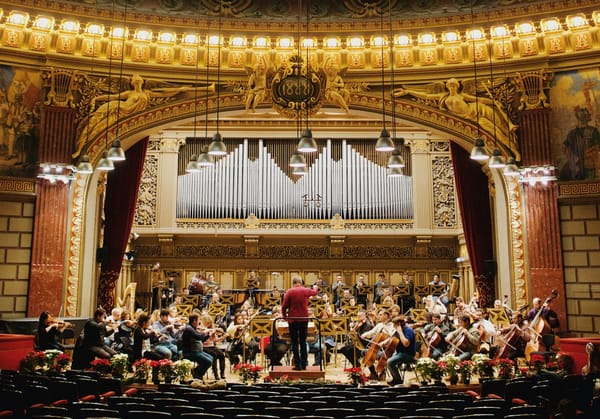What is a Musical Instrument?
Musical instruments are tools that translate human creativity into sound, shaping cultural identities and musical expression. From ancient flutes to modern synthesizers, instruments have evolved with humanity, blending artistry, technology, and emotion into powerful symbols of meaning.

A musical instrument is any object or device that produces sound, intentionally crafted or adapted to create music. From the simplest of percussion instruments to the most complex electronic synthesizers, musical instruments have existed in virtually every human culture throughout history. They are the tools through which musicians express emotions, ideas, and cultural identity, acting as extensions of the body and mind. Understanding what constitutes a musical instrument involves exploring its purpose, its historical evolution, the science behind its function, and the cultural significance that elevates mere objects into carriers of sound and meaning.
The Definition and Purpose of Musical Instruments
At its core, a musical instrument is any device that produces sound with the intent of creating music. This broad definition encompasses everything from traditional, purpose-built instruments like violins, pianos, and flutes, to unconventional objects repurposed for musical expression, such as glasses of water, garbage cans, or even computer software. What differentiates a musical instrument from other sound-producing objects is the intentionality behind its use—an instrument is designed, selected, or adapted to make music.
The primary function of a musical instrument is to enable musicians to shape and control sound. By varying parameters such as pitch, timbre, and volume, musicians can create melodies, harmonies, rhythms, and textures that resonate with listeners. Instruments are, in a sense, extensions of the human body, as they respond to physical gestures like plucking, blowing, striking, or pressing. The artistry lies in the musician’s ability to master the instrument and harness its full potential to evoke emotions and convey meaning.
Instruments are not static entities; they evolve over time in response to new technologies, cultural shifts, and artistic trends. From primitive flutes made from animal bones to sophisticated electronic keyboards, the history of musical instruments mirrors the development of human ingenuity and creativity.
The Historical Evolution of Musical Instruments
The origin of musical instruments can be traced back to the dawn of human civilization. Early instruments were likely derived from everyday objects used for survival, such as hunting tools or cooking utensils, repurposed to create sound for rituals, communication, or entertainment. The earliest known musical instruments, such as bone flutes and drums, date back tens of thousands of years and were integral to religious ceremonies, community gatherings, and storytelling.
In ancient societies, instruments took on symbolic and cultural significance. The harp, lyre, and aulos in ancient Egypt, Mesopotamia, and Greece were not only used for entertainment but also to accompany religious rituals and royal ceremonies. In China, the zither-like guqin and bronze bells were considered instruments of the scholars, while in India, the sitar and tabla became integral to the spiritual practices and classical music traditions that developed over millennia.
The Middle Ages and Renaissance saw the rise of more complex instrument designs, such as lutes, organs, and harpsichords. The invention of the violin family and the development of keyboard instruments like the clavichord and early pianos during the Baroque and Classical periods in Europe marked a turning point in Western music, allowing for greater expressive range and technical versatility. By the 19th and 20th centuries, advancements in materials and craftsmanship led to the creation of modern orchestral instruments, such as the full-size concert grand piano, the Boehm system flute, and valve brass instruments, which expanded the possibilities of musical performance.
In the modern era, the invention of electronic instruments revolutionized music production. Instruments like the theremin, synthesizer, and electric guitar broke away from the constraints of acoustic sound, offering new timbres and an unprecedented level of control over sound manipulation. Digital technologies continue to evolve, giving rise to software instruments that push the boundaries of what we traditionally understand as a musical instrument.
Categories of Musical Instruments: The Hornbostel-Sachs System
Instruments come in a wide variety of forms, from simple percussion instruments to complex string and wind instruments. One of the most commonly used systems for classifying musical instruments is the Hornbostel-Sachs classification, developed in the early 20th century by Erich von Hornbostel and Curt Sachs. This system organizes instruments into four primary categories based on how sound is produced:
- Idiophones: These are instruments that produce sound through the vibration of the material itself, without the need for strings, membranes, or air columns. Examples include xylophones, cymbals, and bells. Idiophones are often associated with percussion instruments, but they can also be melodic, such as the marimba.
- Membranophones: These instruments produce sound through the vibration of a stretched membrane. Drums are the most common examples of membranophones, including instruments like the snare drum, djembe, and tabla. The pitch and timbre of membranophones depend on factors such as the size, tension, and material of the membrane.
- Chordophones: Chordophones are stringed instruments that produce sound through the vibration of stretched strings. Examples include violins, guitars, harps, and pianos. In this category, sound can be generated by plucking, bowing, or striking the strings, and the pitch is determined by the length, tension, and mass of the strings.
- Aerophones: These instruments produce sound through the vibration of air. Wind instruments like flutes, clarinets, and trumpets fall into this category. The pitch is controlled by altering the length of the air column inside the instrument, either by opening and closing holes or adjusting the length of tubing.
A fifth category, electrophones, was added later to account for instruments that produce sound primarily through electrical means, such as synthesizers and electric guitars.
The Science Behind Musical Instruments
The functioning of musical instruments is deeply rooted in the principles of physics, particularly acoustics—the science of sound. At the most basic level, sound is produced when an object vibrates, creating pressure waves in the air that are perceived as sound by the human ear. Each musical instrument manipulates these vibrations in unique ways to produce specific sounds.
For instance, in string instruments like violins or guitars, the vibration of the strings produces sound waves. The frequency of the vibration determines the pitch: a longer, thicker string produces a lower pitch, while a shorter, thinner string vibrates faster and produces a higher pitch. The body of the instrument acts as a resonator, amplifying the sound and giving it its distinctive timbre.
Wind instruments, such as flutes or trumpets, rely on the vibration of air columns. In these instruments, the length of the air column inside the instrument can be adjusted by opening and closing holes (as in a flute) or by changing the shape of the tubing (as in a trumpet). The vibration of the air column creates the sound, and the frequency of this vibration determines the pitch.
Percussion instruments like drums produce sound when struck, causing the material of the instrument to vibrate. The pitch of the sound can be controlled by altering the tension of the drumhead or the size of the drum.
In electronic instruments, sound is generated through electrical circuits and then amplified through speakers. The manipulation of voltage, frequency modulation, and sound synthesis allows electronic instruments to create a vast array of sounds, often imitating traditional acoustic instruments or generating entirely new timbres.
Cultural and Symbolic Significance of Instruments
Musical instruments are not just tools for making sound; they are imbued with cultural and symbolic significance. In many societies, specific instruments are associated with religious rituals, social hierarchies, or national identity. For instance, the sitar and tabla are iconic instruments of Indian classical music, deeply tied to the cultural and spiritual traditions of the Indian subcontinent.
Instruments can also carry political or social connotations. In the African American tradition, instruments like the banjo, initially associated with enslaved Africans, evolved into symbols of resistance and cultural pride. Similarly, during the 1960s counterculture movement, the electric guitar became a symbol of rebellion and freedom, especially in the hands of rock icons like Jimi Hendrix.
In contemporary music, certain instruments have become emblematic of specific genres. The saxophone, for instance, is closely associated with jazz, while the synthesizer is often linked to electronic music. These associations further demonstrate the power of musical instruments to convey cultural identity and meaning.
Modern Innovations and the Future of Musical Instruments
The 20th and 21st centuries have seen significant advancements in the design and function of musical instruments. The development of electronic and digital instruments has transformed how music is composed, performed, and recorded. Instruments like the electric guitar, synthesizer, and drum machine have played pivotal roles in the evolution of genres like rock, pop, and electronic dance music.
Today, digital technology allows musicians to create music using virtual instruments—software that replicates the sounds of traditional instruments or generates entirely new ones. These virtual instruments are controlled by MIDI (Musical Instrument Digital Interface) keyboards or other input devices, making it possible to compose and produce music entirely on a computer.
Looking ahead, the future of musical instruments will likely continue to be shaped by technology. Innovations in AI and machine learning are already being integrated into musical instruments, allowing for more interactive and adaptive performances. Wearable instruments, augmented reality interfaces, and biofeedback technology are all areas of active research, suggesting that the line between performer and instrument may continue to blur.
Conclusion
Musical instruments are far more than objects that produce sound; they are deeply embedded in the cultural, scientific, and emotional fabric of human life. They serve as bridges between intention and sound, allowing musicians to translate their creative impulses into expressions of beauty, emotion, and meaning. From the earliest bone flutes to the latest digital synthesizers, musical instruments have evolved alongside humanity, continuously adapting to new technologies, artistic trends, and cultural contexts. As we move further into the digital age, the definition of what constitutes a musical instrument may expand even further, but their role as essential tools of musical expression will remain constant.





